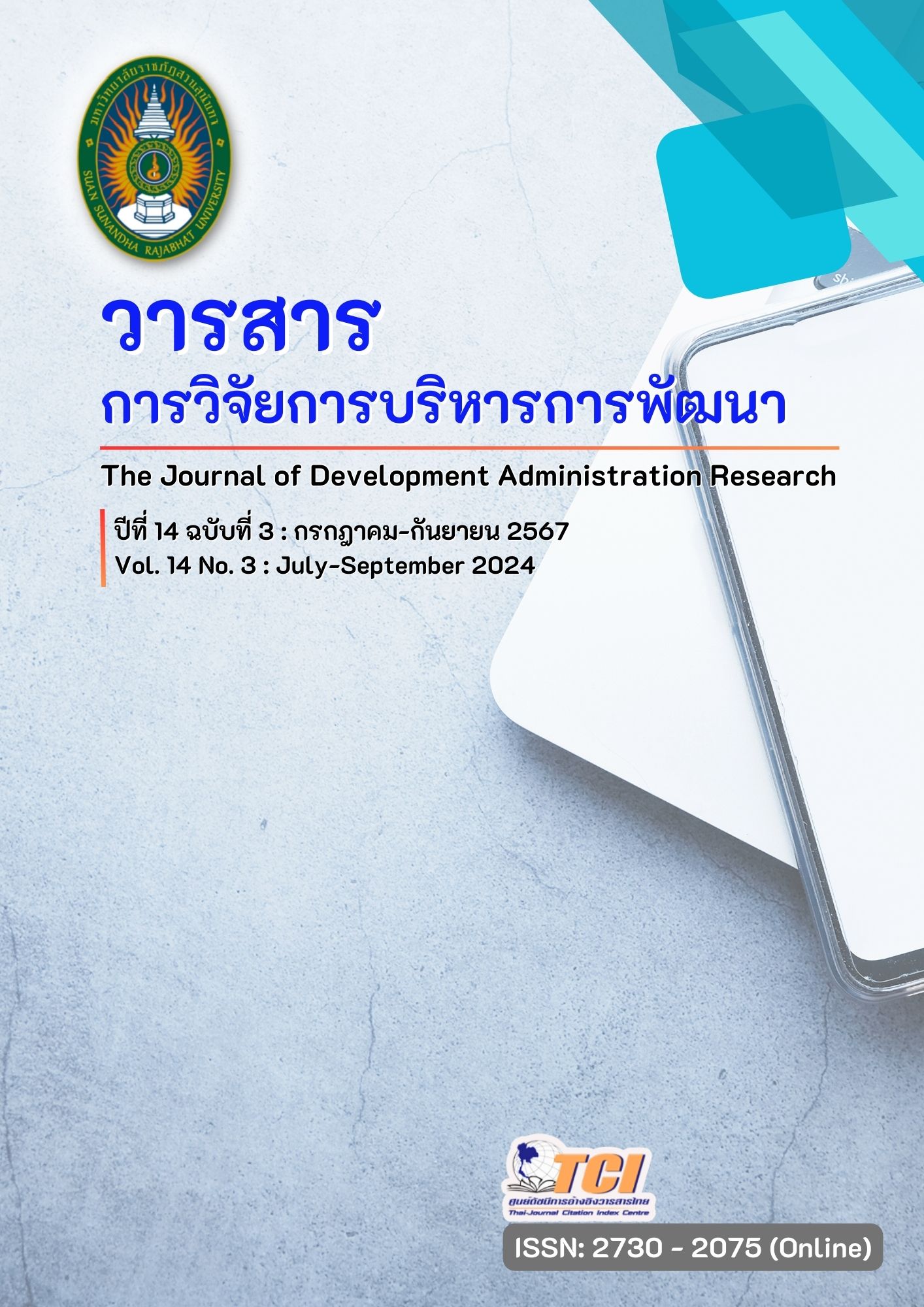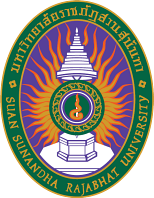แนวทางการใช้เสรีภาพทางอากาศของกลุ่มประเทศอาเซียน
คำสำคัญ:
เสรีภาพทางอากาศ, สิทธิการบิน, นโยบายการเปิดเสรีการบิน, กลุ่มประเทศอาเซียน, สถาบันการบินพลเรือนบทคัดย่อ
บทความนี้มีวัตถุประสงค์เพื่อนำเสนอแนวทางการพัฒนาการใช้เสรีภาพทางอากาศของกลุ่มประเทศในภูมิภาคอาเซียน รูปแบบการวิจัยเป็นการวิจัยเชิงคุณภาพ ผู้ให้ข้อมูลสำคัญ คือ ตัวแทนหน่วยงานที่รับผิดชอบและผู้มีส่วนได้ส่วนเสียต่าง ๆ ในอุตสาหกรรมการบิน จำนวน 19 คนจาก 14 หน่วยงาน ใช้วิธีคัดเลือกแบบเฉพาะเจาะจง เครื่องมือที่ใช้ในการวิจัยคือ แบบสัมภาษณ์เชิงลึก วิเคราะห์ข้อมูลโดยใช้การวิเคราะห์เนื้อหาแล้วบรรยายเชิงพรรณนา
ผลการวิจัยพบว่า ในปัจจุบันกลุ่มประเทศอาเซียนสามารถใช้เสรีภาพทางอากาศได้ถึงเสรีภาพที่ 5 ในการขนส่งผู้โดยสารและสินค้า อย่างไม่จำกัด ระหว่างเมืองใด ๆ ในอาเซียน สำหรับแนวทาการพัฒนาการใช้เสรีภาพทางอากาศ จะเริ่มด้วยการใช้เสรีภาพทางอากาศที่ 7 เนื่องจากมีความเหมาะสมและสามารถนำไปประยุกต์ในสถานการณ์ปัจจุบันได้มากกว่าเสรีภาพทางอากาศที่ 6 หลังจากนั้นจึงทยอยเพิ่มการใช้เสรีภาพทางอากาศที่ 8 ถึง 9 ในลำดับถัดไป
ข้อค้นพบที่สำคัญคือทำให้ทราบถึงการพัฒนาเสรีภาพทางอากาศ นอกจากจะต้องพิจารณาปัจจัยด้านการบินแล้วควรมีความร่วมมือในด้านเศรษฐกิจและสังคมเพื่อให้การดำเนินงานของอุตสาหกรรมการบินสามารถขับเคลื่อนไปได้อย่างมีประสิทธิภาพมากยิ่งขึ้น
เอกสารอ้างอิง
สำนักงานการบินแห่งประเทศไทย. (2564). ความตกลงพหุภาคีอาเซียนว่าด้วยบริการเดินอากาศ. ค้นเมื่อ 1 มีนาคม 2564, จาก https://www.caat.or.th/th/archives/55673.
สุฐิต ห่วงสุวรรณ และสุธาสินี รูปแก้ว. (2560). ตลาดการบินเดียวอาเซียน: ความเป็นมา ความก้าวหน้าและอุปสรรค. วารสารวิชาการมหาวิทยาลัยอีสเทิร์นเอเชีย ฉบับวิทยาศาสตร์และเทคโนโลยี, 11, 49-56.
Abate, M. (2016). Economic effects of air transport market liberalization in Africa. Transportation Research Part A: Policy and Practice, 92, 326-337.
Abate, M., & Christidis, P. (2020). The impact of air transport market liberalization: Evidence from EU's external aviation policy. Economics of Transportation, 22, 1-6.
Abeyratne, R. (2014). ASEAN single aviation market and Indonesia-can it keep up with the giants?. Indonesia Law Review, 4, 163-175.
Air Transport Action Group. (2020). Aviation benefits beyond borders. Switzerland: ATAG.
ASEAN Secretariat. (2012). Roadmap for integration of air travelsector (Appendix). Retrieved March 15, 2021, from https://asean.org/wp-content/uploads/2012/05/19424.pdf
Boeing. (2019). Commercial market outlook 2019-2038. Retrieved April 1, 2021,from https://www.boeing.com/content/dam/boeing/boeingdotcom/commercial/market/commercial-market-outlook/assets/downloads/cmo-2019-report-final.pdf.
Christidis, P. (2016). Four shades of open skies: European Union and four main external partners. Journal of Transport Geography, 50, 105-114.
European Union. (2004). Regulation (EC) no 847/2004 of the European Parliament and of the Council of 29 April 2004 on the negotiation and implementation of air service agreements between member states and Third countries (Document no. 32004R0847). Retrieved June 20, 2020, from http://data.europa.eu/eli/reg/2004/847/oj
European Union. (2008). Regulation (EC) No 1008/2008 of the European Parliament and of the Council of 24 September 2008 on common rules for the operation of air services in the Community (Recast) (Text with EEA relevance) (Document no. 32008R1008). Retrieved June 20, 2020, from http://data.europa.eu/eli/reg/2008/1008/oj.
Fu, X., Oum, T., & Zhang, A. (2010). Air transport liberalization and its impacts on airline competition and air passenger traffic. Transportation Journal, 49, 24-41.
International Civil Aviation Organization. (2016). Manual on the regulation of international air transport (Doc no. 9626). Retrieved March 1, 2021, from https://www.icao.int/ Meetings/a39/Documents/Provisional_Doc_9626.pdf
International Civil Aviation Organization. (2020). ICAO annual report of the council 2020. Retrieved May 15, 2021, from https://www.icao.int/annual-report 2020/Documents/ARC_2020_Air%20Transport%20Statistics_final_sched.pdf
InterVISTAS. (2015). The economic impact of air service liberalization. Washington, DC: Author.
Mavie, I. D. (2015). Strategy to fully implement on the liberalization of airspace in Mozambique. n.p.: Civil Aviation Training Center.
ดาวน์โหลด
เผยแพร่แล้ว
รูปแบบการอ้างอิง
ฉบับ
ประเภทบทความ
สัญญาอนุญาต
ลิขสิทธิ์ (c) 2024 วารสารการวิจัยการบริหารการพัฒนา

อนุญาตภายใต้เงื่อนไข Creative Commons Attribution-NonCommercial-NoDerivatives 4.0 International License.
บทความที่ได้รับการตีพิมพ์เป็นลิขสิทธิ์ของมหาวิทยาลัยราชภัฏสวนสุนันทา
ข้อความที่ปรากฏในบทความแต่ละเรื่องในวารสารวิชาการเล่มนี้เป็นความคิดเห็นส่วนตัวของผู้เขียนแต่ละท่านไม่เกี่ยวข้องกับมหาวิทยาลัยราชภัฏสวนสุนันทา และคณาจารย์ท่านอื่นๆ ในมหาวิทยาลัยฯ แต่อย่างใด ความรับผิดชอบองค์ประกอบทั้งหมดของบทความแต่ละเรื่องเป็นของผู้เขียนแต่ละท่าน หากมีความผิดพลาดใดๆ ผู้เขียนแต่ละท่านจะรับผิดชอบบทความของตนเองแต่ผู้เดียว




